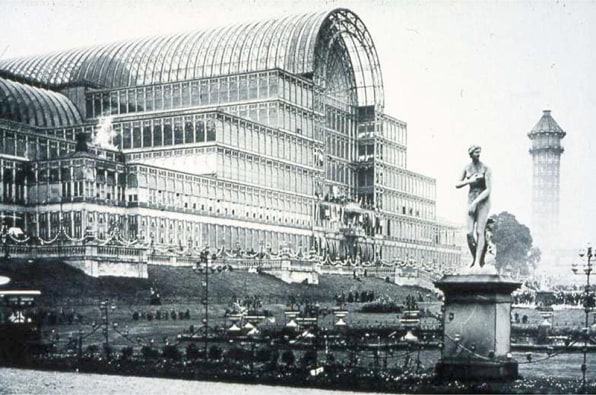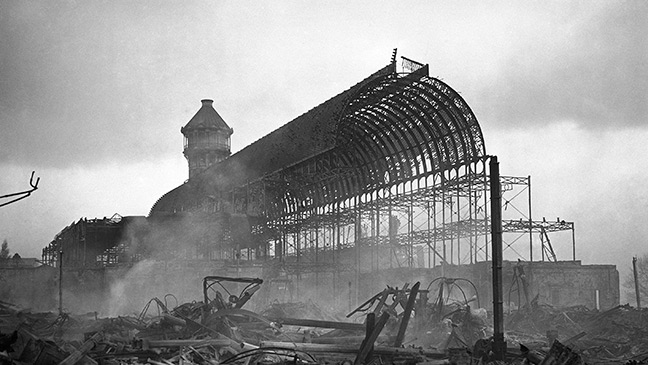I am going to cover a couple of different topics in this blog. Before that, I confess that All That Is Solid Melts Into Air is not quite what I imagined it to be, but I am trudging through just the same to try to connect with the ideas Marshall Berman is offering. This probably is the case also with more than a couple student-chosen books. Hopefully some value can still gained and conveyed in these short reflections.
So one interesting strategy of Berman's is to trace aspects of modernity and its development through the literary texts of the time. As the text is fairly Eurocentric, the great cities of the continent and their artists are featured in parallel. Such is the case for St. Petersburg, Russia and Alexamder Pushkin. Specifically, Pushkin's poem "The Bronze Horseman" which is subtitled, "A Petersburg Tale." Berman cites this poem as the quintessential story of the inception of modernity in the form of the city: "Petersburg itself is the product of thought - it is, as Dostoevsky's Underground Man will remark, 'the most abstract and premeditated city in the world'" (183). There is great beauty and possibility in the city as it rises from the landscape:
 One additional piece from Berman. Apparently Russians who were trumpeting the advancements of their cities like St. Petersburg had some real modernist envy when it came to London's Crystal Palace. Once again it is Dostoevsky who is in wonder: "Must not one accept this as the ultimate truth, and become silent forever? This is all so triumphant, majestic and proud it takes your breath away . . . you feel that something final has taken place here, taken place and ended" (236). That "something final" is where Dostoevsky was wrong. As destruction is a theme of modernism, so was the Crystal Palace destroyed in fire.
One additional piece from Berman. Apparently Russians who were trumpeting the advancements of their cities like St. Petersburg had some real modernist envy when it came to London's Crystal Palace. Once again it is Dostoevsky who is in wonder: "Must not one accept this as the ultimate truth, and become silent forever? This is all so triumphant, majestic and proud it takes your breath away . . . you feel that something final has taken place here, taken place and ended" (236). That "something final" is where Dostoevsky was wrong. As destruction is a theme of modernism, so was the Crystal Palace destroyed in fire.
 |
| This statue emerges through the violent floodwaters as a symbol of Peter the Great's vision for his city. |
Where once a humble Finnish lad – / Poor foster-child in Nature’s keeping – / Alone upon the low banks had / Oft cast his time-worn nets when reaping / The waters’ hidden harvest, – now / Great towers and palaces endow / The bustling banks with grace and splendour;The hero is a commoner named Yevgeny, who stands in wonder of the city yet seems to be a product of it. He is in love with a woman Parasha and would like to marry her. Nice enough, until THE FLOOD! Yevgeny surveys the damage:
Here a house was gone: / Uprooted; here debris lay scattered / About; here still stood, mauled and battered, / Some crippled houses. All around, / As if upon a battleground, / Lay corpses.So, all that was solid (again) melts into air - the city of dreams and certainty (and I am giving a VERY brief account here) seems doomed from the outset. The flood of 1824 portrayed in the poem was one of THREE in St. Petersburg's history (1725 and 1924 as well). So, is the quest for modernity destined to end up in destruction? Is the destruction part of the process for even more advanced development?
 One additional piece from Berman. Apparently Russians who were trumpeting the advancements of their cities like St. Petersburg had some real modernist envy when it came to London's Crystal Palace. Once again it is Dostoevsky who is in wonder: "Must not one accept this as the ultimate truth, and become silent forever? This is all so triumphant, majestic and proud it takes your breath away . . . you feel that something final has taken place here, taken place and ended" (236). That "something final" is where Dostoevsky was wrong. As destruction is a theme of modernism, so was the Crystal Palace destroyed in fire.
One additional piece from Berman. Apparently Russians who were trumpeting the advancements of their cities like St. Petersburg had some real modernist envy when it came to London's Crystal Palace. Once again it is Dostoevsky who is in wonder: "Must not one accept this as the ultimate truth, and become silent forever? This is all so triumphant, majestic and proud it takes your breath away . . . you feel that something final has taken place here, taken place and ended" (236). That "something final" is where Dostoevsky was wrong. As destruction is a theme of modernism, so was the Crystal Palace destroyed in fire. I can't help but make some connections to the comics world. In Watchmen, Dr. Manhattan creates an enormous timepiece / airship / palace that seems perfect is every possible way. That is until his former companion Laurie throws a perfume bottle at it. Was it built to last? Is it a symbol that all that is built eventually comes to ruin? It is no coincidence that the poem "Ozymandias" is also evoked in Watchmen, as "Nothing beside remains" from his once "mighty works."
I can't help but make some connections to the comics world. In Watchmen, Dr. Manhattan creates an enormous timepiece / airship / palace that seems perfect is every possible way. That is until his former companion Laurie throws a perfume bottle at it. Was it built to last? Is it a symbol that all that is built eventually comes to ruin? It is no coincidence that the poem "Ozymandias" is also evoked in Watchmen, as "Nothing beside remains" from his once "mighty works."
This:
Then this:


I enjoyed reading your blog about "All That is Solid Melts Into Air". Some interesting theories were thrown out there, some of which were very thought-provoking. Your questions regarding the quest for modernity, especially "Is the destruction part of the process for even more advanced development?". This immediately made me think about the earthquake-proof buildings of the west coast. And I think that the answer to your question is "yes", as, over the course of history, earthquakes in California have led to the development of stronger and more durable architecture.
ReplyDeleteThe blog post was structured really well with the right amount of pictures and quotes laced in. I really enjoyed the connection you made between the subject of the readings with the Watchmen as I think making connections with the book makes the book more memorable and allows the content to stick with you. Finally the captions made it easier to understand the purpose of the pictures and their specific placement.
ReplyDeleteMr. Brown,
ReplyDeleteYour blog was very thoughtful and well written. I liked how you went deeper into your topic and asked questions about how modernity could possibly end in destruction, but then lead to further modernity. This book reminds me of the text we read from Adam Goodheart, The Skyscraper and the Airplane. Goodheart describes how we put our full faith in modernity and that it may fail us, and cause our ultimate destruction, just like the theme of this book, modernity can lead to destruction. Overall, your blog was very interesting, and I look forward to the next one.
Mr Brown, I think your blog was great and super detailed. You did a great job telling the reader exactly what your authors strategy was in the book, and explained it well with the quotes you chose. The thing I also really enjoyed were the pictures that you included which were entertaining but also helped with the ideas you wrote about regarding the comic world. Finally, I loved how at the end of your blog, you chose to write about a connection to you and the book. Connections that a reader makes can really have you engage more in the book and understand concepts better.
ReplyDelete